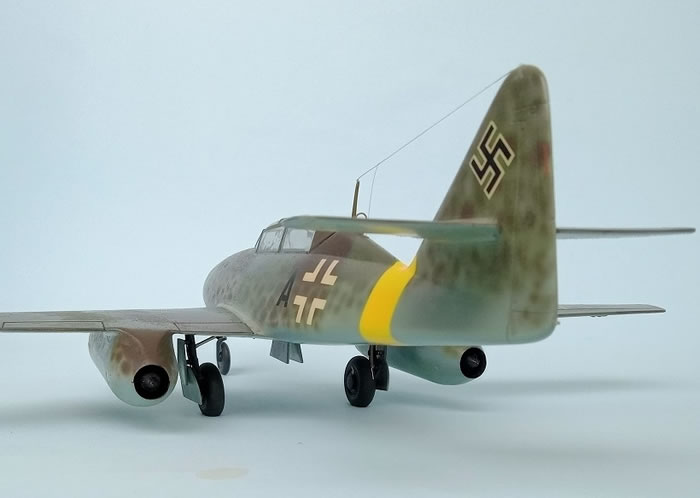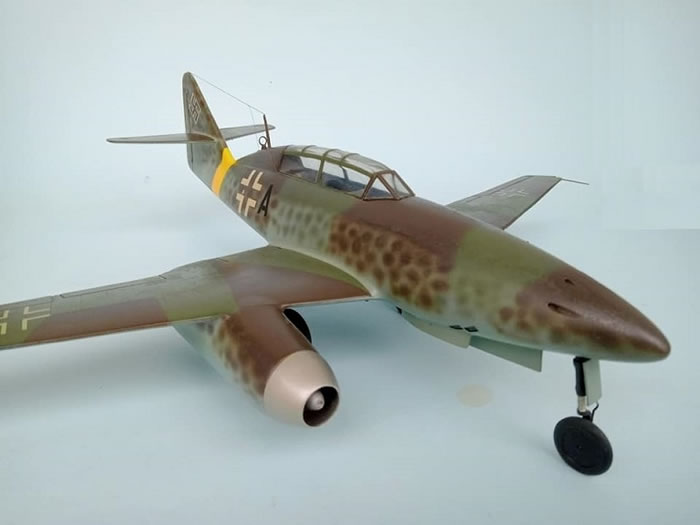Revell's 1/72 scale
Messerschmitt Me 262 B-1a
by Tadeu Pinto Mendes
|

|
Messerschmitt Me 262 B-1a |

The Me 262 Schwalbe (swallow) was the world's first operational jet fighter. Its emergence was due to the need for more efficient conventional piston fighters to intercept the Allied bombers over Germany.
At the beginning of the Me 262 program, Messerschmitt's engineers examined potential derivatives, and an obvious development was a two-seat version for familiarization purposes.

Messerschmitt's partnership in the Me 262B two-seat design was Blohm und Voss, and in this case a series of single-seat fuselages (Me 262A-1a) were changed to the coach configuration by this company. The second seat was installed where the fuselage fuel tank was normally installed behind the pilot in single-seat fuselages, and a new two-piece canopy with a side-opening cabin was designed.
The first two-seater was remade from the pre-production/development single-seat Me 262S5 aircraft WNr 130010. It initially flew after conversion during July 1944. All subsequent two-seaters were derived from the single-seat fuselages of the Me 262A being Blohm und Voss delivering the first to the Luftwaffe in September 1944.
Taking advantage of the design of the Me 262B, later the airline Deutsche Lufthansa, in its Berlin-Staaken engineering facilities and workshops, was involved in the conversion of several fuselages of the Me 262A ( all initially intended to be single-seater) for the Me 262B-1a/U1 night fighter. The exact total that existed for the Me 262B-1a trainer is not known, but it is known that there were 37 known and identified conversions.
This old American Revell model was in the B-1a/U1 night fighter version which was then also decal for the B-1a trainer version.

To then do the coach was just taking the antennas and making some changes in the second seat. Added weight inside the bow so that it was level when finished.
I also chamfered the wheels to give an idea of weight.
This model came with the option of making the coach's painting, coming with the numbering of which in this case was “35”.
I ended up changing to the “Black A” and had the addition of a yellow band along the tail. This copy was one of several found abandoned in Czechoslovakia at the end of the war.
The paintwork of the Me 262B-1a was similar to that of the last Me 262A-1a being Violet Brown (RLM 81) and Dark Green (RLM 82) on the backs.
Lower surfaces were finished in Light blue (RLM 76).
Model and Text Copyright ©
2022 by Tadeu Pinto Mendes
Page Created 16 March, 2022
Last Updated
17 March, 2022
Back to HyperScale Main Page

|
Home
| What's New |
Features |
Gallery |
Reviews |
Reference |
Forum |
Search